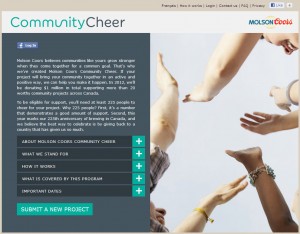Nicholas Buse’s blog post about Chevron being fined for an oil leak brings up an interesting topic. Oh wait— wasn’t this the topic of conversation just the other day it seems like, but regarded BP instead? Company’s producing oil leaks seems to happen much too often, so the question lays with why aren’t the regulations deterring the company’s from being careless and disregard public safety? If these big corporations were actually scared of the fine they would get from the governments they could perhaps be more inclined to further their precautions, since it is understandable that mistakes do happen.
A non-governmental Organization which lobbys for more punishments and reparations is Peta. With their influence that should be enough to deter companies from risking the offchance of spilling. PETA has a strong following, and if PETA were to do a campaign about boycotting a corporation that hurt animals, that would surely ruin that corporations brand. However, from what I’ve seen in the past, this boycott only lasts so long, and eventually people forget the harm that company caused, that is until they make the same mistake yet again.



 Having spent the last decade learning the painful lessons of celebrity, Nike shifted its focus towards whole teams, and particularly dominant collegiate ones. Considering the deep ties that Nike has with the University of Oregon, the brand having been forged on the asphalt track of Hayward Field, Nike expanded its already massive visibility, introducing the Pro Combat line of football equipment and issuing Oregon’s teams the most distinctive and progressive uniforms in sports. While this worked brilliantly for a while, with Oregon’s team becoming the national darling, filling the role USC previously held. However, 2011 has proved to be something of disappointing year for the football team, and an absolute disaster for the running program, with perhaps the most prestigious quasi-amateur running team in the world faling to qualify for the NCAA Cross Country National Championships and the absolutely flashiest football team in the world suffering a disappointing loss to USC and dropping from 4th in the nation to 9th and losing any shot at the BCS final. This raises the question, is sports marketing essentially gambling? Is the policy of only selecting a few, albeit extremely talented athletes and teams dangerous to an entire brand? Is Nike’s new practice, that is, issuing multiple teams with the prestigious Pro Combat gear a safer bet? Or does it simply dissolve the power of such endorsements? Does it reflect a crack in Nike’s extremely well designed and lightweight armour? Is Nike’s infallibility dependent on the teams it endorses?
Having spent the last decade learning the painful lessons of celebrity, Nike shifted its focus towards whole teams, and particularly dominant collegiate ones. Considering the deep ties that Nike has with the University of Oregon, the brand having been forged on the asphalt track of Hayward Field, Nike expanded its already massive visibility, introducing the Pro Combat line of football equipment and issuing Oregon’s teams the most distinctive and progressive uniforms in sports. While this worked brilliantly for a while, with Oregon’s team becoming the national darling, filling the role USC previously held. However, 2011 has proved to be something of disappointing year for the football team, and an absolute disaster for the running program, with perhaps the most prestigious quasi-amateur running team in the world faling to qualify for the NCAA Cross Country National Championships and the absolutely flashiest football team in the world suffering a disappointing loss to USC and dropping from 4th in the nation to 9th and losing any shot at the BCS final. This raises the question, is sports marketing essentially gambling? Is the policy of only selecting a few, albeit extremely talented athletes and teams dangerous to an entire brand? Is Nike’s new practice, that is, issuing multiple teams with the prestigious Pro Combat gear a safer bet? Or does it simply dissolve the power of such endorsements? Does it reflect a crack in Nike’s extremely well designed and lightweight armour? Is Nike’s infallibility dependent on the teams it endorses? The article “
The article “ http://www.visioncritical.com/
http://www.visioncritical.com/